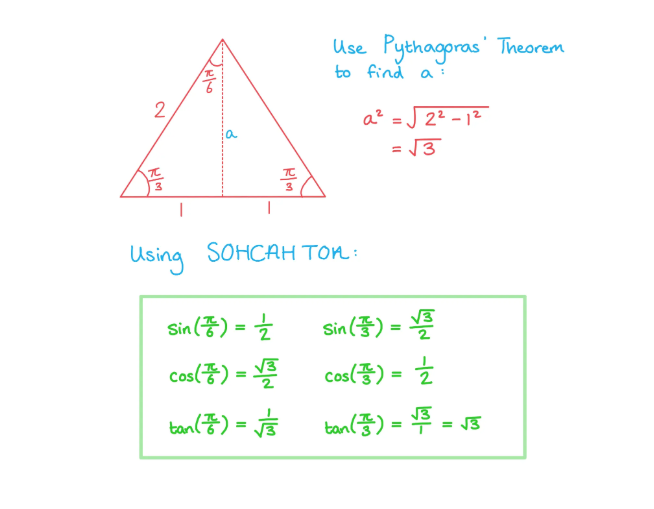Exact Values (DP IB Analysis & Approaches (AA)): Revision Note
Did this video help you?
Trigonometry exact values
What are exact values in trigonometry?
For certain angles the values of sin θ, cos θ and tan θ can be written exactly
This means using fractions and surds
You should be familiar with these values and be able to derive the values using geometry
You are expected to know the exact values of sin, cos and tan for angles of 0°, 30°, 45°, 60°, 90°, 180° and their multiples
In radians this is
and their multiples
The exact values you are expected to know are:

How do I find the exact values of other angles?
Use the symmetries of the unit circle
| |||
|
You can use this to find the exact trig values for any multiple of 30° or 45°
For example:

How do I derive the exact values in trigonometry?
There are two special right-triangles that can be used to derive the exact values
30° - 60° - 90°
Draw an equilateral triangle where each side has length 2
Split the triangle into two identical triangles
Looking at one triangle:
One side has length 1
The hypotenuse has length 2
The other side has length √3

45° - 45° - 90°
Draw a right-angled isosceles triangle where two sides have length 1
The third side has length √2

Examiner Tips and Tricks
You will be expected to be comfortable using exact trig values for certain angles but it can be easy to muddle them up if you just try to remember them from a list, sketch the triangles and trig graphs on your paper so that you can use them as many times as you need to during the exam!
sketch the triangles for the key angles
/
,
/
,
/
sketch the trig graphs for the key angles
,
/
,
/
,
/
,
/
Worked Example
Using an equilateral triangle of side length 2 units, derive the exact values for the sine, cosine and tangent of and
.
Answer:


Unlock more, it's free!
Did this page help you?